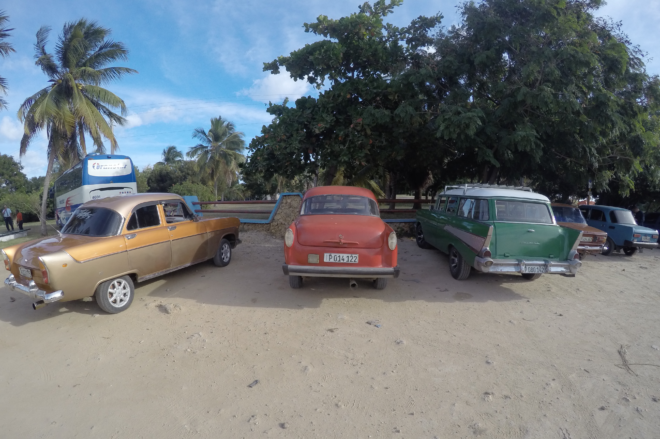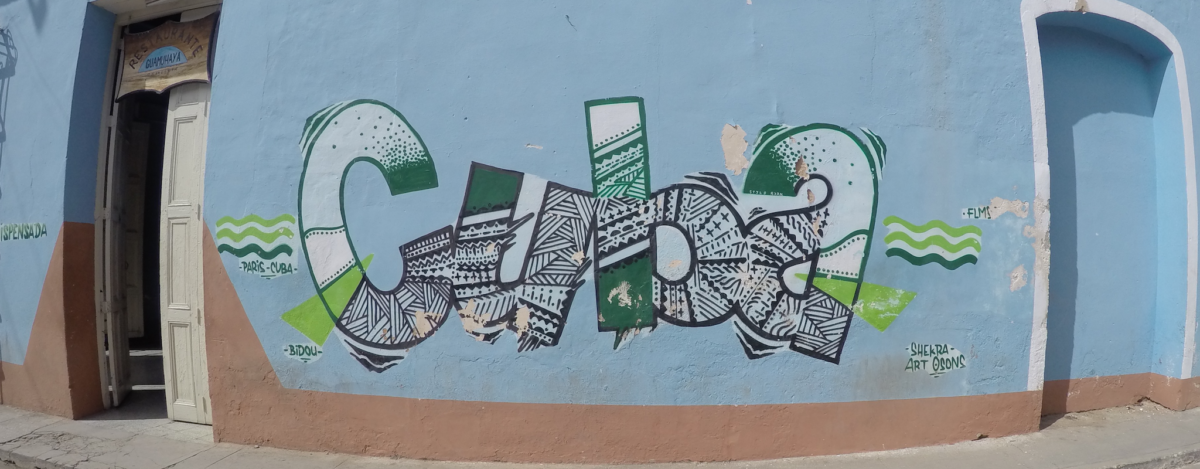Havana Nights and CGMs

So you’ve got type 1 diabetes (T1D). Now imagine trying to convince your parents you should go to a foreign country where an embargo was just lifted after 50 years and where you’ll have no internet or phone connectivity. Last spring that was my task when I had the chance to go Cuba with my school during Thanksgiving break. Surprisingly, it didn’t take much convincing at all as my parents support my travel love. There was, however, one condition: I had to get a continuous glucose monitor (CGM).
They’d been pushing the technology for months, but I always refused. A few years ago I went off the pump. I didn’t like having a tubed device attached to me, and the tubeless pumps stood out too much. Nonetheless, a pump was what it took to make Cuba a reality, so I gloomily agreed.
For months I planned with my chaperones and tour guides and adjusted to my new CGM. Then November was here, and so was my trip.
It was a bright and early 3 a.m. wakeup time for all 18 students and three faculty members to make our first flight to Miami. We hadn’t even been in the air for an hour yet, and I wake to the sound of my CGM beeping a low blood sugar message, reading 37. This was not the start I was expecting this early in my new adventure. However, I was able to correct on the plane and my number quickly adjusted.
While I was in Cuba, each meal was the same everyday. For breakfast, we were served eggs, fruit and bread(although I am also gluten free), along with Cuba’s infamous coffee. As for lunch and dinner, we had the choice of meat, usually fish, chicken, or beef, along with rice and beans. This helped my numbers adapt to  their new dieting options. When it came to the water however, it was a different concern. Cuba’s drinking water is not sterilized and as a person with diabetes, getting sick is not an ideal situation. We weren’t allowed to drink any water unless it was filtered in our special water bottles and we couldn’t use the faucet for anything besides washing our hands. Luckily, no one got sick from drinking the water (there were a few that did forget because it is such a habit) and my group was able to continue to have the best trip ever.
their new dieting options. When it came to the water however, it was a different concern. Cuba’s drinking water is not sterilized and as a person with diabetes, getting sick is not an ideal situation. We weren’t allowed to drink any water unless it was filtered in our special water bottles and we couldn’t use the faucet for anything besides washing our hands. Luckily, no one got sick from drinking the water (there were a few that did forget because it is such a habit) and my group was able to continue to have the best trip ever.
As for my blood sugars, they were at first a rollercoaster. One minute they would be in a normal range and the next they would be either too high or too low. My most dangerous moments were my night time lows, which would be delayed from all the activity from the day. Not even halfway through my 10-day trip, I was running low on correction snacks, unsure what to do when I would run out. The stores in Cuba didn’t exactly have fruit snacks and juices boxes. I had to settle for chocolate covered peanuts, which only had about five per bag and weren’t very effective. Despite all the activity however, I was able to keep my lows under control and I didn’t run out of snacks, although it was a very close call. When we touched down in Miami, I bought many snacks to prepare for my flight home, hoping I wouldn’t go low like I did going there. Fortunately, I didn’t have any further problems and I arrived home in one piece!
 Reflecting on my trip, having the opportunity to travel around Cuba was such an amazing experience that I will never forget, especially because it was an untouched place for so long that the architecture, food and culture are so different from where we live. It was even more unique because we were there when Fidel Castro died, which is something that will go down in history. Not many Americans, specifically high schoolers, can say they were there during such a historical time and see how the country reacts to such a big and controversial death. As for my diabetes however, I am glad I had the CGM with me because otherwise I may not have known all the crucial lows and highs that were ultimately a matter of life or death. I still am not a huge fan of it, but I can’t argue that it does provide important information when needed. All in all, don’t let diabetes stop you from going somewhere or doing something you love to do. Don’t be afraid to take risks, but I would maybe suggest checking out a CGM before you do!
Reflecting on my trip, having the opportunity to travel around Cuba was such an amazing experience that I will never forget, especially because it was an untouched place for so long that the architecture, food and culture are so different from where we live. It was even more unique because we were there when Fidel Castro died, which is something that will go down in history. Not many Americans, specifically high schoolers, can say they were there during such a historical time and see how the country reacts to such a big and controversial death. As for my diabetes however, I am glad I had the CGM with me because otherwise I may not have known all the crucial lows and highs that were ultimately a matter of life or death. I still am not a huge fan of it, but I can’t argue that it does provide important information when needed. All in all, don’t let diabetes stop you from going somewhere or doing something you love to do. Don’t be afraid to take risks, but I would maybe suggest checking out a CGM before you do!





